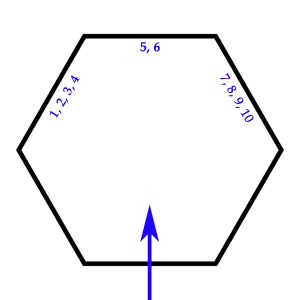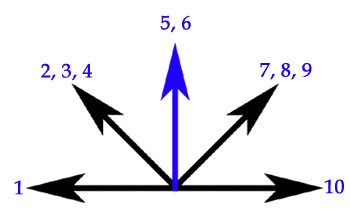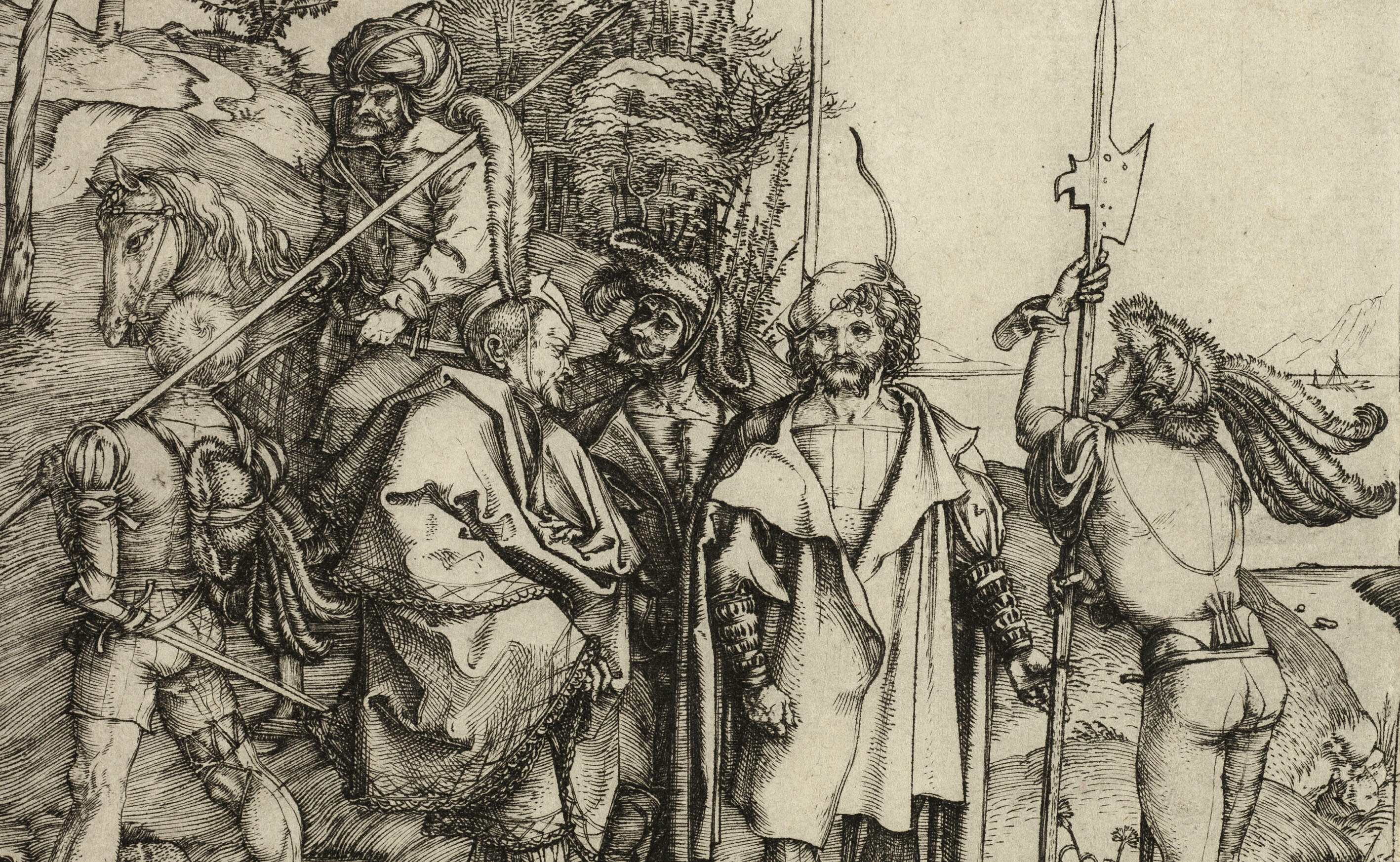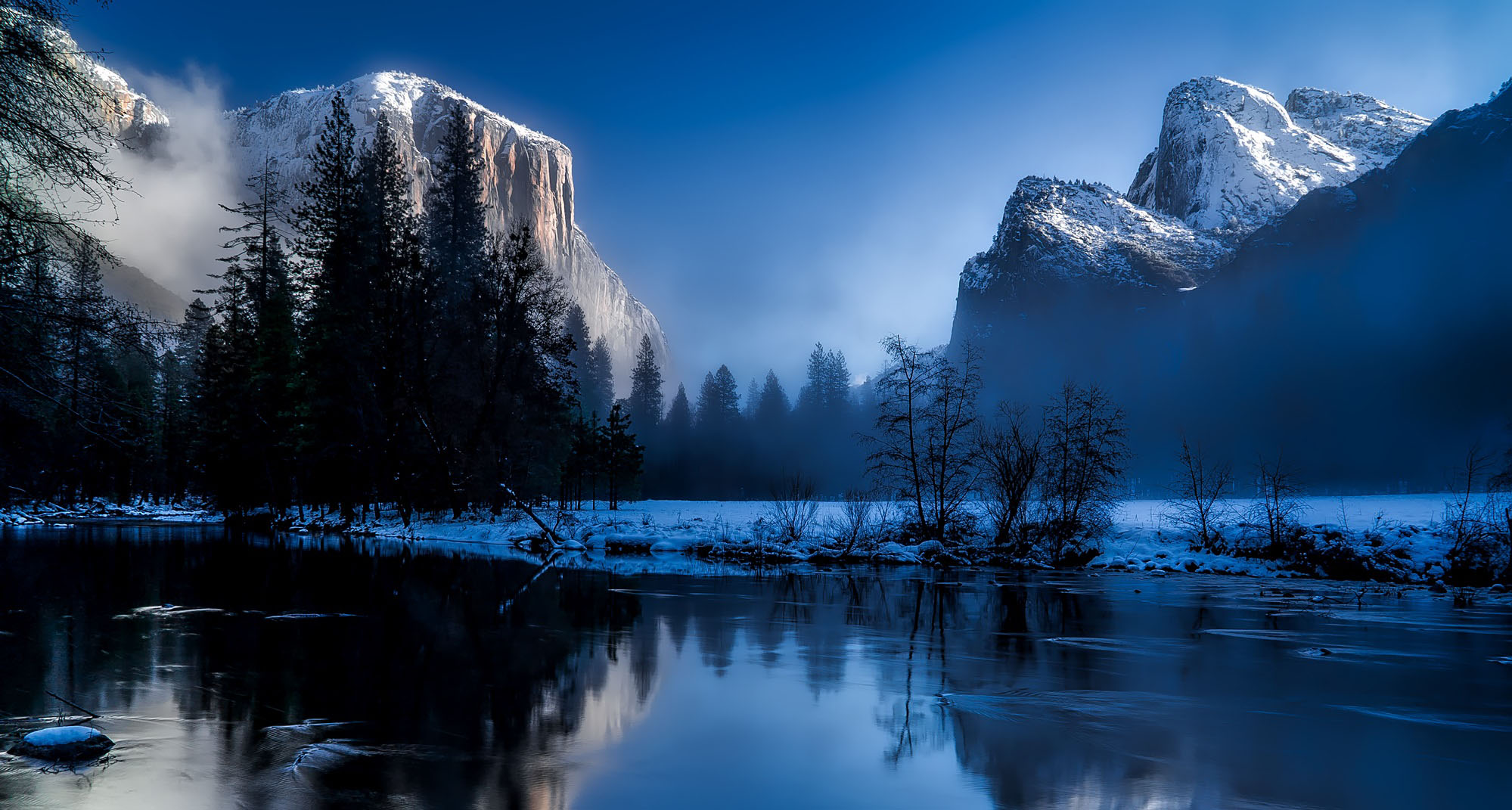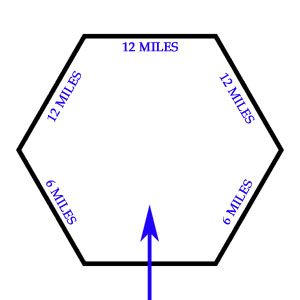
To check for encounters, roll 1d12 once per watch.
A roll of 1 indicates that an encounter should be rolled on the hexcrawl’s wandering encounter table.
A roll of 12 indicates that the characters have encountered a keyed location within the hex as an exploration encounter. Most hexes only have a single keyed location. For hexes with multiple keyed locations, determine the location encountered randomly.
Playtest Tip: It’s often effective to do an encounter check for all of the watches in a day simultaneously by rolling 6d12. (See Fistfuls of Dice for tips on interpreting simultaneous dice rolls.)
Exploration Encounter: Exploration encounters only occur during watches in which the characters are traveling or otherwise exploring an area. They do not occur during watches in which the characters are resting or otherwise stationary.
Wandering Encounter: A wandering encounter can occur during any watch. (They are usually creatures, whose movement can bring them into contact with the expedition regardless of whether the expedition is on the move or not.)
Note: See Hexcrawl Tool: Spot Distances for guidelines on the distance at which initial Wisdom (Perception) and Dexterity (Stealth) checks should be resolved.
ADVANCED RULE: ENCOUNTER CHANCE
You can vary the probability of having an encounter. The table below shows the probability per watch of different encounter checks and also the chance per day that there will be at least one encounter.
You also need to determine whether or not a keyed location has been encountered. This can be done in one of three ways:
- Determine it on the same encounter die. (The probability does not have to match the probability of a location encounter. For example, you might roll 1d8, triggering a wandering encounter on a roll of 1 or 2 and triggering a location encounter on a roll of 8.)
- Roll a separate encounter die. (This can have the advantage of simultaneously triggering both an encounter and the keyed location, suggesting that the encounter might happen at the location.)
- Roll a single encounter check and then check to see if that encounter is the keyed location. (You might build this onto the random encounter table – i.e., results 1-10 on a d20 table might be for the keyed location while 11-20 have the wandering encounters. However, this can make it difficult to modify the encounter table or use different encounter tables while keeping the probability of finding locations consistent.)
| CHECK | PER WATCH | PER DAY |
|---|---|---|
| 1 in 1d6 | 16% | 66% |
| 2 in 1d6 | 33% | 91% |
| 1 in 1d8 | 13% | 57% |
| 2 in 1d8 | 25% | 82% |
| 1 in 1d10 | 10% | 46% |
| 2 in 1d10 | 20% | 73% |
| 1 in 1d20 | 5% | 26% |
Note that if you’re using some of the advanced rules below that interpret certain wandering encounters as exploration encounters, these will effectively reduce the odds of an encounter happening.
ADVANCED RULE: LOCATION PROPERTIES
Keyed locations may have optional properties that determine how and when they’re encountered.
On Road/River/Trail: The location is on a road, river, or trail. Expeditions traveling along the road, river, or trail will automatically encounter the location (unless it’s hidden, see below). Expeditions avoiding the road, river, or trail will usually not encounter the location.
Visible: The location is large enough or tall enough to be seen anywhere within the hex. Expeditions entering the hex automatically spot the location. If a rating is given (e.g., Visible 2), then the location can be seen from that many hexes away.
Hidden: The location is difficult to spot. When this encounter is generated, make a second encounter check. If an encounter is not indicated on the second check, the location has not actually been found. (If the expedition is in exploration mode, they may instead make a Wisdom (Perception) or Intelligence (Investigation) check to locate a hidden location after the first encounter check.)
ADVANCED RULE: % LAIR
The percentage listed is the chance that a creature encountered as a wandering encounter is instead encountered in their lair. If the creature is encountered in their lair, the encounter is considered an exploration encounter.
Note: This check functionally generates a new location for the current hex (the lair of the indicated creature type). Over time and thru play, therefore, this encounter system will continue to add new content to your hex key (helping to fill the vast, howling emptiness of a typical hex). The more time the PCs spend in a particular area, the more content will be added to that area.
ADVANCED RULE: % TRACKS
The percentage listed is the chance that a creature’s tracks are encountered (and not the creature itself). Tracks are only found as an exploration encounter.
The tracks may be followed using the Tracker watch action. Tracks are usually 1d10 days old. DMs can determine where the tracks lead (although they’ll usually circle back to the creature’s lair in both directions). See Hexcrawl Tool: Tracks for additional guidance.
Note: When generating a wandering encounter, check to see if the encounter is tracks. If it is not, then check to see if it’s a lair. If it is not, then it’s a wandering encounter. Once again, notice that these additional checks will substantially reduce the odds of a night time encounter (when the party is not on the move).
ADVANCED RULE: BORDER ENCOUNTERS
This percentage, which is listed for either a region or a specific hex (or set of hexes), is the chance in a hex bordering on a different region that the wandering encounter should be rolled on that region’s encounter tables.
This rule is obviously only relevant if you have different wandering encounter tables customized for each region.
ADVANCED RULE: ENCOUNTER REACTION CHECK
To randomly determine a creature’s initial reaction to an encounter, roll 2d6 on the following table.
| 2d6 | Reaction |
|---|---|
| 2-3 | Immediate Attack |
| 4-5 | Hostile |
| 6-8 | Cautious/Threatening |
| 9-10 | Neutral |
| 11-12 | Amiable |
Obviously, the roll is not necessary if you already know the creature’s attitude. After the initial interaction, assuming hostilities don’t immediately break out, you can use Charisma checks to determine if the creature’s attitude improves, worsens, or stays roughly the same.
Note: The outcome of the reaction table is deliberately vague. This is necessary because it can be applied to a wide variety of intelligent, semi-intelligent, and unintelligent creatures, but it’s also expected that the DM will use their creativity and knowledge of the setting to make the general result something specific. A Hostile encounter, for example, might be a group of starving wolves; slavers looking to capture the PCs; or a group of paladins who mistakenly think the PCs are the slavers.
ADVANCED RULE: SIMULTANEOUS ENCOUNTERS
It can be desirable for your encounter procedures to potentially generate multiple encounters in the same watch:
- It creates uncertainty for the players. (They can’t simply assume that they won’t experience another encounter in the current watch because they’ve already had one.)
- It can create a dynamic fluctuation in difficulty.
- The combination of multiple encounters into a single encounter can create lots of different encounters from a relatively simple encounter table. (Are the two encounters allies? In conflict with each other? Is one encounter drawn to the sounds of the PCs dealing with the other encounter? If you generate one encounter at the lair of a different encounter, what are they doing there? And so forth.)
There a few methods you can use for achieving this:
- Make multiple checks per watch.
- On a successful encounter check, immediately make a second encounter check. (You can repeat this again if the second encounter check is successful, potentially putting no limit to the number of encounters possible in a single watch.)
- Incorporate a “Roll Again Twice” or similar entry on your wandering encounter table.
Each method has its own advantages and disadvantages.
Note: I, personally, check for a second encounter when the first encounter is successful. This second encounter check might indicate the keyed location of the hex, placing the first encounter there.
ADVANCED RULE: CIRCUMSTANCE DIE
The circumstances of an encounter will be informed by the terrain type, time of day, spot distance, watch actions, and so forth. (Generating an encounter with eight kenku at night while the expedition is resting on the open plains suggests a very different encounter than one with eight kenku in the middle of the day in a dark forest.)
When a particular condition is either pervasive in a region or important to the campaign (but should not be present in every single encounter), a circumstance die can be used to randomly incorporate it.
Examples could include:
- An Icewind Dale campaign in which there’s a 2 in 6 chance for an encounter to occur during blizzard conditions.
- A 1 in 4 chance that the demon trapped in a cage formed from one of the PCs’ souls attempts to assert control.
- A 1 in 6 chance that the encounter is being watched by a strange, shadowy figure with glowing red eyes.
- A 1 in 6 chance that the creatures encountered belong to or are working for the Countess Remorzstan (with appropriate brands or work papers).
- A 1 in 8 chance that the encounter occurs near an outcropping of glowing purple crystals.
Some such conditions might, under other circumstances, be generated through other procedures. (For example, blizzards might be generated through a random weather table.)
EXAMPLE: SAMPLE ENCOUNTER TABLES
Location Check: 1 in 1d6
Encounter Check: 1 in 1d10
Border Encounter: 1 in 1d20
| Encounter | ||||
|---|---|---|---|---|
| Lizardmen (hex A10, A13) | ||||
| Tree trolls (hex C13) | ||||
| Adventurers | ||||
| Ghouls (hex A12, E9) | ||||
| Zombies (hex E9) | ||||
| Bat swarm | ||||
| Jungle bear (hairless, use black bear stats) | ||||
| Carrion crawlers | ||||
| Giant leech | ||||
| Orcs (hex B7) | ||||
| Wild boars | ||||
| Tyrannosaurus rex |
Note: I indicate hexes which are already keyed as potential lairs for this creature type. This can inform the nature of wandering encounters and/or suggest a potential origin/terminus for tracks.
This table uses several advanced rules. When rolling an encounter, I would simultaneously roll a 1d6, 1d10, and 1d20 for each watch.
If the 1d6 result is a 1 (indicating a location encounter), it would indicate that the PCs have found the keyed location in the hex. If I’m not using simultaneous encounters, I would then ignore the other dice rolls (the location check “overrides” them; you could also just roll the 1d6, then the 1d10, then the 1d20, but that’s not necessary and is more time-consuming).
If the 1d10 check indicates an encounter, then you’d check the 1d20 roll to see which encounter table you should be rolling on. (You could also theoretically roll 2d20 of different colors, allowing you to immediately identify what type of encounter.)
With an encounter identified, you would then check % Lair, % Tracks, and # Appearing (although you don’t need to check for tracks if a lair encounter is indicated). Lairs and tracks are also exploration encounters, so if those are indicated when the party is resting, you can treat the encounter check as having no result and the watch passes quietly.
This is, of course, a fairly complicated example featuring a lot of the advanced rules all being used simultaneously. For a much simpler resolution you could just roll 1d12 (1 = wandering encounter, 12 = location encounter), roll 1d20 on the wandering encounter table (if a wandering encounter is indicated), and then the number of creatures appearing.
DESIGN NOTE: PROCEDURAL vs. DESIGNED ENCOUNTERS
A procedural encounter will usually generate one or more general elements. (For example, 1d6 friendly orcs.) As described in Breathing Life Into the Wandering Monster, the expectation is that the DM will contextualize this encounter. In other words, the procedural encounter is an improv prompt for the DM to create the encounter (often combined with a simulationist element of modeling, for example, what kinds of monsters lurk in the Darkovian Woods).
A designed encounter, on the other hand, is far more specific: You’re essentially prepping the material that you would improvise with a procedural encounter.
The Principles of Smart Prep maintain that you generally shouldn’t prep material that can be just as easily improvised at the table, so generally speaking I would describe most designed encounters as being training wheels for DMs who aren’t confident improvising encounters from procedural prompts yet. (There can be a number of exceptions to this, but they’re pretty rare in actual practice, in my experience.)
In other words, designed encounter tables typically result in a lot of wasted prep. They also get used up (a procedural encounter can be used over and over and over again to varying results; a designed encounter is specific and generally can’t be repeated). This creates gaps in your encounter table and a need to frequently restock them.
(Procedural-based encounter tables will also need to be tweaked or restocked from time to time – if the PCs wipe out the goblin village, it may result in no further encounters with goblins – but this is very rare in comparison.)
DESIGN NOTE: SETTING LAIR/TRACK PERCENTAGES
In designing your encounter tables, the % Lair and % Tracks values can be set arbitrarily. For a quick rule of thumb, use Lair 20% (or Nil for animals that don’t really have lairs) and Tracks 40%.
Older editions actually included values for one or both of these stats in their monster entries, so for some creatures you may be able to reference those older resources.
A gamist tip here is to increase the % Tracks value based on difficulty: If there’s a monster that’s a lot more powerful than everything else in the region, crank up the % Tracks so that the PCs are more likely to become aware that it’s there than they are to run into it blindly.
A simulationist tip is to vary both numbers by a sense of the creature’s behavior. Here’s an easy example: How likely is a flying creature to leave tracks compared to a woolly mammoth? (See Hexcrawl Tool: Tracks for thoughts on what types of tracks a flying creature would leave.) You can also think about how much time a creature spends in its lair and use that as a guideline. (They spend about half the day in their lair? 50%.)
A dramatist tip is to think about how interesting each type of encounter is for each creature type. Is a ghoul lair more interesting than running into a pack of ghouls in the wild? If so, crank up the ghoul’s % Lair.
The last thing to consider is that, as noted above, a Lair encounter will generally add a new location to the current hex. The higher you set the % Lair values on your encounter tables, the more often this will happen and the quicker areas of your campaign world will fill up with procedurally generated points of interest.
Conversely, how comfortable are you improvising this type of content? It’s good to stretch your creative muscles, but it may make more sense to keep the % Lair value low until you’ve gotten more comfortable with pulling lairs out of your hat.


